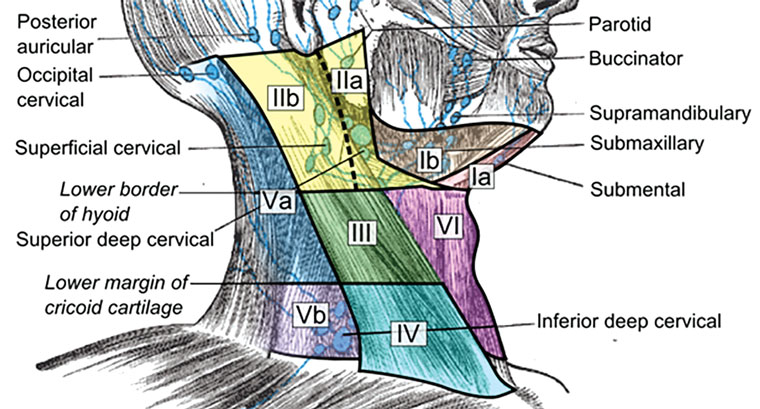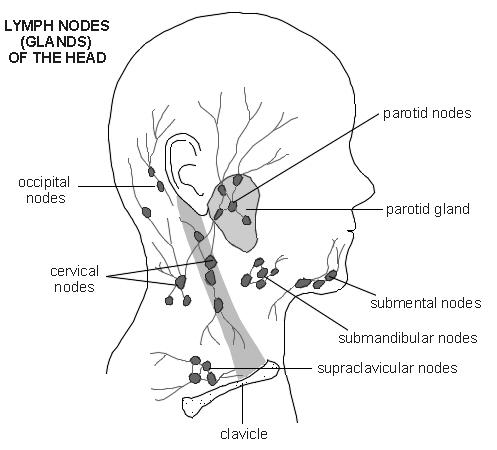

Our aim was to analyse CT examinations in children after high-energy trauma to provide normal measurements of cervical lymph nodes for the paediatric population and to determine whether lymph node size changes by anatomical location and with the child’s age.

For lymph nodes in the chest this influence of age on lymph node size was already shown. Therefore, lymph node measurements are likely to differ over time and among ages, and applying adult standard values to children of all ages might not be sufficient for correct diagnosis of lymphadenopathy. Reportedly, lymph nodes with a short axial axis greater than 10 mm are seen in up to 90% of children 4–8 years old. The body size changes continuously during childhood and the occurrence of large cervical lymph nodes is common in otherwise healthy children. Axial measurements were found to be slightly smaller compared to measurements in the coronal and sagittal planes. Classification of lymphadenopathy was shown to differ among the axial, coronal and sagittal planes when applying size criteria based on the axial plane. Īlthough lymph nodes are typically measured in the axial plane, the growth and alignment of a lymph node might not correspond to this plane. Lymph nodes with a short axis greater than 10 mm (mm) are usually considered abnormal exceptions are deep cervical lymph nodes, in which a maximum diameter of 15 mm is considered within normal limits. No normal measurements or specific size criteria have been described for cervical lymphadenopathy in children and generally, the normal measurements as described for adults are applied for children as well. For correct diagnosis of enlarged cervical lymph nodes on ultrasound, CT or MRI, it is important that normal short- and long-axis diameters of lymph nodes are known for all cervical levels and for all ages.Ĭervical lymphadenopathy in children is widely addressed in the literature, but this is often in terms of localisation and abnormal appearance. Large lymph nodes are a common finding in otherwise healthy children.

One of the possible symptoms of infectious or malignant disease in children is lymphadenopathy. Lymph nodes with an axial short-axis diameter exceeding 15 mm for Level II and 10 mm for all other cervical levels are uncommon in otherwise healthy children. The Pearson correlation coefficient for age and lymph node size at Levels IV–VI was in the range of 0.19–0.47. The greatest measured diameters were 14 mm for the short axis in the axial plane, 24 mm for the long axis in the axial plane and 28 mm for the long axis in the coronal plane. ResultsĪ total of 733 lymph nodes were measured in 142 children (62% boys, 38% girls). For the largest lymph node at each level, we measured diameters in both the long and short axial axes and the long coronal axis. We evaluated axial and coronal 2-mm reconstructions for lymph nodes at six cervical levels. We included 142 children (ages 1–17 years) who underwent cervical CT examination after high-energy trauma. To determine the normal measurements of cervical lymph nodes in children on CT. No normal measurements or specific size criteria have been described for cervical lymph nodes in children.


 0 kommentar(er)
0 kommentar(er)
